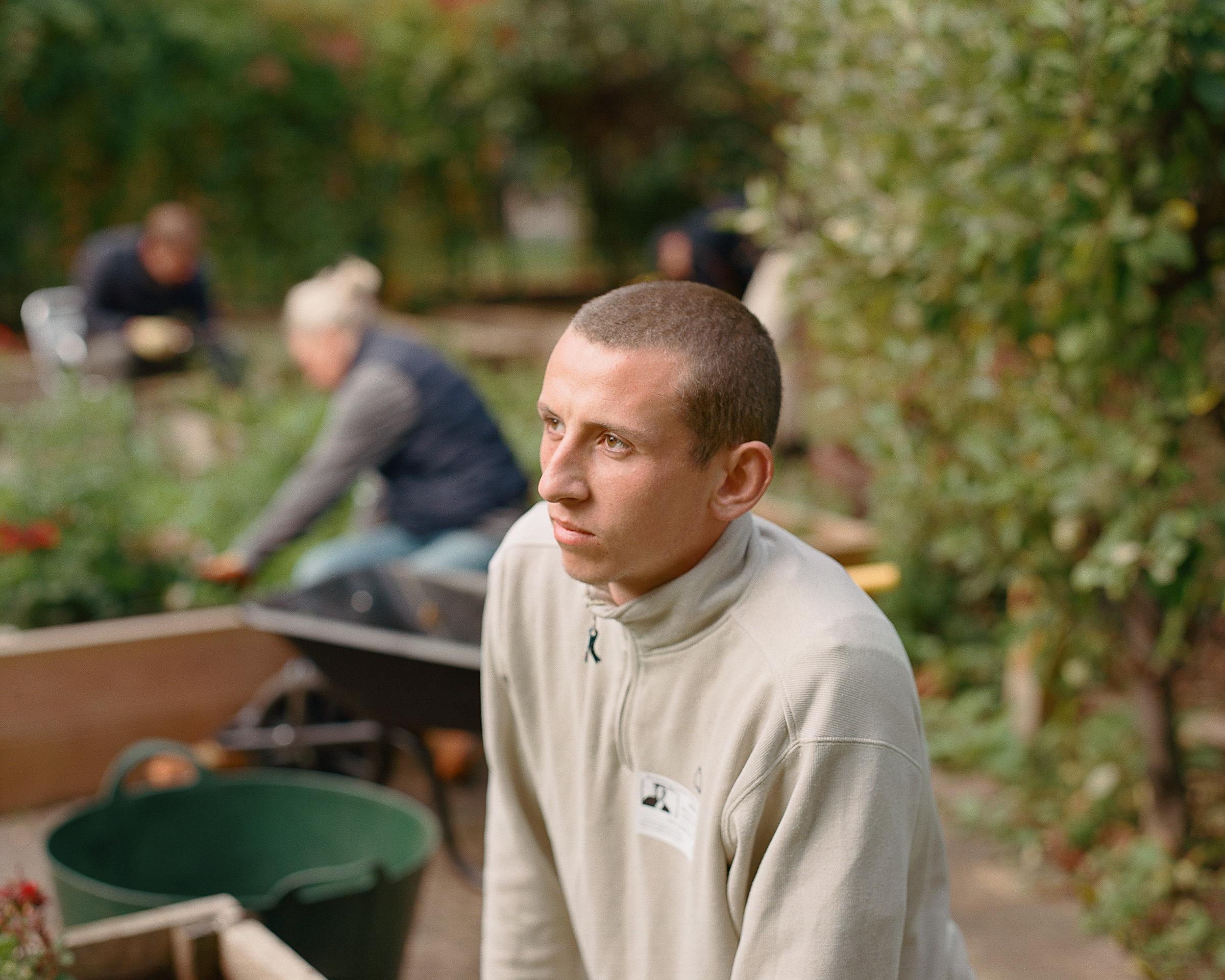
From love to landrights: What will it take to grow an imagination infrastructure?
Some reflections on Imagination Infrastructure 002: A World between Worlds by Keri Facer
It’s been just over a month since the second Imagination Infrastructuring event and two themes keep coming back to me: first, the recurrence of words like love, care and joy; and second, some cold hard economic questions about access to land, buildings, capital. Woven through all of this was a sense of learning to let go of old stories and tell new ones.
Writing a blog that captures everything in this event – which spanned 12 hours, hundreds of participants, and contributions from 24 brilliant speakers - is impossible.
In her keynote, Vanessa Andreotti, incoming Dean at University of Victoria, Canada and co-founder of the Gesturing Towards Decolonial Futures Collective, drew on her years of decolonizing work with Indigenous and non-Indigenous people, in education and arts institutions, and with Indigenous communities in what are currently known as Canada, the United States, Brazil and Peru. She invited us to notice what stories we are holding onto and which we need to let go of as we imagine other worlds. She asked us to attend to any addictions we might have, from wherever we stand, to stories of ownership, domination and control, stories of entitlement and birthright. She invited us to explore which of these we could let go of in order to ‘step forward to do what is needed rather than just what you want to do’. She asked us to resist easy answers - to attend to many different layers of reality without flattening them, to hold space for the many different people inside each of us, and to deploy a ‘polysemic awareness’ – noticing the many different meanings in the words we use to ‘word and world the world’.
What I take from Vanessa’s talk is a fundamental refusal of simple stories, matched by a deep commitment to questioning our interior and exterior frames of reference, and an awareness of the many, complex, latent possibilities in the present. This is the sort of foundational work that promises to create cracks in reality as we currently see it, and to break open our awareness to the possibilities of other worlds.
And indeed, Vanessa invited all of us to allow our hearts to break open not apart as we look at what is going on in the world. This deep attention to the emotional and affective aspects of working with the imagination that kept surfacing for me throughout the day.
I heard it in Melz Owusu and Amahra Spence’s brilliant and joyful discussion of how they are each creating ‘life-affirming infrastructure’. I heard it when Amahra, the founding director of MAIA and Organiser of the Black Land and Spatial Justice project, talked of her desire to ‘build infrastructure that feels like my grandad’s home… that creates love’ and ‘lights up our souls’. And I heard it when Melz, the founder of the Free Black University, framed imagination as ‘a dance with possibility’.
Vanessa, Amahra and Melz left me with a sense that creating imagination infrastructure might be thought of as a practice of rigorous, thoughtful love, comfortable with the internal and external complexities of both ourselves, and of what it means to care and create.
Later, in a conversation between Arturo Escobar (the anthropologist and writer whose work has transformed ‘development’ thinking and opened up a field of relational and pluriversal design) and Vlad Glaveanu (socio-cultural psychologist and leading figure in Possibility Studies), we explored the relationship between the real, the possible and the impossible in enabling change. The conversation went in many directions, but I took from it the importance of recognising the already-present existence of many worlds in our world if we wish to imagine how things might be otherwise, the importance of pluriversal politics that comes out of this, and the generative possibilities that arise both when we sink into the lived and messy complexities of one place and when we open up to the encounter with difference.
The conversation with Arturo and Vlad also brought up for me the importance of listening not just talking and the need for silence to listen to the quiet voices inside and outside.
It reminded me that imagination is a relational practice, a practice of empathy that draws us out of ourselves and towards the other. Creating conditions for this sort of listening, silence, empathy and hearing of the other feels like an essential component of what one of the speakers in Gabriella’s session on the civic imagination, called ‘rituals of the communal’.
Could an imagination infrastructure, I was left wondering, create intentional spaces for silence, for listening, for hesitation and reflection – rather than relying on the louder practices of action and speaking? Is part of the art of the imagination knowing when not to speak?
This question of listening draws attention to the embodied, material practices of the imagination that came up in both Sophie Strand’s opening keynote and the panel on the ecological imagination. Here the role of the body and of encounters with the more-than-human and material worlds in imaginative practice became clear. We heard of the importance of learning to draw and to observe the world, of the immersive sensual practice of working with wood as a form of dialogue, of how coming to notice the world in its minute detail can be a first step towards reverence. We heard a story of how reconnection with land enabled a return to an older language of love and care, that, in turn, gained surprising power in the world of policy-making.
And indeed, across all of our discussions during this long and rich day, was this question of how change happens. From Sophie Strand’s reminder that any idea is a hot potato that needs to be passed on, to the reframing of the imagination as an ecological practice, in which each person is part of a wider system that we cannot control and cannot determine, but in which we send out ripples the limits of which cannot be known in advance.
The form of imagination infrastructure that became visible for me from the conversations over this day, is one that is built, as Dougald Hine argued, in the ruins of the present, out of deep respect for the many worlds already in existence, grown with care and love, formed through listening and attention to the more-than-human and nurtured by a healthy scepticism of simple stories and singular identities.
I was also drawn, in the last session of the day – a dialogue between Aisha Shillingford (artist and creative movement strategist) and Amahra Spence – to a question that we did not sufficiently grapple with throughout the day, namely the economics of land and capital in strengthening the infrastructure of the imagination. This conversation echoed the arguments made by Nick Haynes earlier in the day, that the ecological imagination is a material struggle, tied to the battle for rights to land. Amahra and Aisha’s conversation pointed to the risks of an imagination infrastructure built in temporary spaces, from precarious occupancy – and makes a bigger demand of the project of imagination infrastructure – namely, the necessary reimagination of the economics of land, buildings, and public space.
As this programme moves forward, then, I hope that the project of creating an infrastructure of the imagination will grapple with the questions of material and economic infrastructure. We have to ask how public spaces and resources such as schools, universities, libraries, museums, hospitals – that have been secured and fought for in past struggles for collective imagination – can be saved and reinvigorated as spaces of imagination today. We have to build common cause with those fighting for the arts in education, for the protection of public space and rights to land, for the reclaiming of derelict community buildings from the account books of land-banking developers. And we have to work out how to create longstanding and enduring institutions and assets for the imagination that can serve all parts of our community, particularly those whose access to land and capital have been destroyed or limited in the past. The infrastructure of the imagination, then, is a practice of the mind and the heart, but it is also a practice of new economic thinking that will need to ask fundamental questions about how we understand and use land and physical assets today.

This reflection is part of the imagination infrastructures topic.
Find out more about our work in this area.